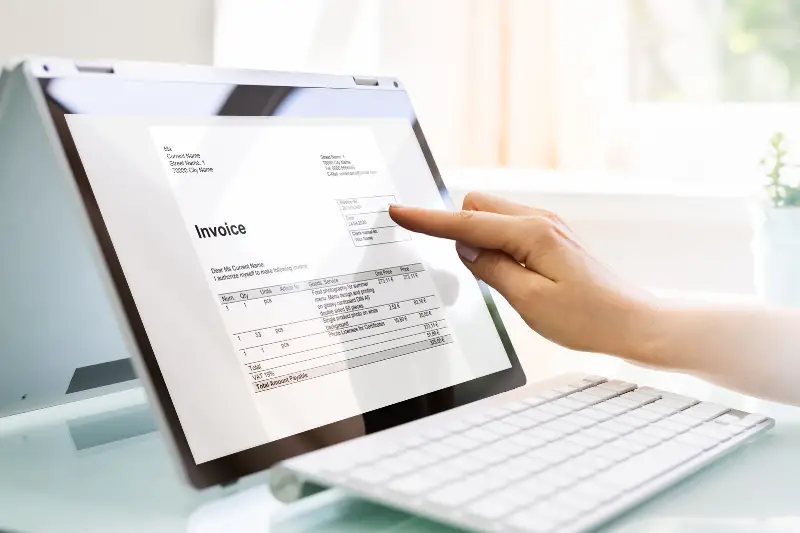Click here to get this post in PDF
Tax invoices are essential for businesses because they act as written evidence of the delivery of goods and services. Entrepreneurs use these records to legally validate a sale transaction by showing the due date of payments. In addition, they use these documents to track whether payment has already been made so they can organize their bookkeeping process.
Another importance of tax invoices is that recipients use them when availing themselves of input tax credit (ITC) to reduce their tax liabilities. However, they must remember to pay towards the acceptance of goods or services within six months of the invoice date. Thus, business owners must manage their tax invoices to send their customers timely reminders about due dates.
This article provides the six most effective strategies for improving tax invoice management.
1. Know The Contents Of Tax Invoices
Learning the details of tax invoices is crucial in managing tax invoices because you have to provide your recipients with the correct details of the purchase. Without adding accurate information, your customers may develop a mistrust of your organization. You might lose your loyal clients and reduce your sales revenue.
To avoid this common incident, you have to know the essential information of an Australian tax invoice. These details may include the type and quantity of product or service and the price set by your company for each item sold. Then, you must indicate the sales transaction date and the transportation mode used for delivery. Also, you should include the tax amount applicable for every item and its sum to conclude the total value-added tax (VAT) rate.
2. Get Exact Customer Information
Sending the billing letter to the wrong recipient is the usual error companies implementing traditional tax invoice management systems make. This incident can be costly and time-consuming for your company because you have to pay extra expenses to deliver the letter back to your commercial space. Additionally, your customers may forget to send payments before the due date, which gives them an excuse to dispute the tax invoice.
Before sending tax invoices to your consumers, you must ensure that you have the correct contact and billing information. To speed up the tax invoicing process, you must collect exact customer details while you have a business transaction with them. This information must include their complete name, email address, and phone number.
3. Implement A Paper Trail
A systematic paper trail is helpful in tax invoice management because it speeds up the process. Since you won’t have to fish out important information, you will be able to send these invoices before the due date. As a result, the recipients will have no valid reason to hide away from delayed payments, which allows you to keep a smoother sales process.
When implementing a paper trail, you need an expandable file folder to place all the original tax invoices. Next, you must take clear photos of these documents and create backups by storing them in digital software so you can still recover them after loss. For any unimportant invoice, you must shred it to prevent third parties from stealing it and misusing details like customer bank information.
4. Outline A Billing Schedule
Outlining a billing schedule enables you to monitor persistent payments that your consumers make through a point of sale (POS) or eCommerce. With this strategy, you can simplify data collection that indicates loyal clients’ various payment methods. Then, you can use these insights to control your cash flow better and help create data-driven decisions for improving the customer experience.
When outlining a billing schedule, you need to define billing plans and when you will charge your tax invoice recipients. To successfully implement this process, you have to automate billing with a payment system to reduce the labor of payment processing.
Once you do so, you must communicate this schedule to your clients so they won’t be surprised after receiving the bill. Ensure you provide them with your correct payment details, like your mailing address and bank account number.
5. Use An Electronic Tax Invoice System
Most businesses now adapt to modern technologies to improve their tax invoicing systems to avoid costly errors. If you don’t assume this innovative approach, you might be unable to keep up with their efficient processing and generate a lower market share. Thus, you have to stay ahead of the competition by digitizing your tax invoice management so you can organize your documents.
Some companies still use the portable document format (PDF), so they can immediately send billing reminders to their customers. Unfortunately, this process is problematic because it still demands the recipients to manually type and transfer the file by duplicating it. Since this method requires human intervention, the tax invoices may still be prone to time-consuming errors.
While PDF tax invoices may work for startup companies, mid-range to multinational corporations must enable e-invoicing. This advanced system automatically generates the invoice on your side during the tax invoicing process using artificial intelligence (AI) format. Then, this technology sends the file directly to the buyer’s information technology (IT) system rather than manually inputting the details into a spreadsheet.
6. Send Billing Reminders
Most companies often face the inevitable incident of non-paying customers, which affects their cash flow. Some of these clients refuse to pay bills simply because they forget about the tax invoice billing schedule because they don’t receive reminders from the organization. If entrepreneurs don’t follow up, they might forget the entire transaction and have inaccurate bookkeeping records.
To prevent this incident, you must send friendly billing reminders to ask why clients aren’t paying and make necessary resolutions. For instance, if you own a water supply company, you may set a specific due date when you will cut off services so you can demand payment firmly.
If they still fail to pay their dues, you must consider outsourcing a debt collection expert that will help you recover fees. This professional can handle following up with non-paying customers without going to court.
Key Takeaway
As an entrepreneur, you must ensure that you’re providing your customers with updates and records about every sale transaction for legal purposes. Therefore, you should consider following these six strategies to create an efficient tax invoice management system. Once you do so, you can ensure successful sales transactions and speed up the accounting process.
You may also like: How To Start A Tax Preparation Business In 5 Steps
Image source: AdobeStock


